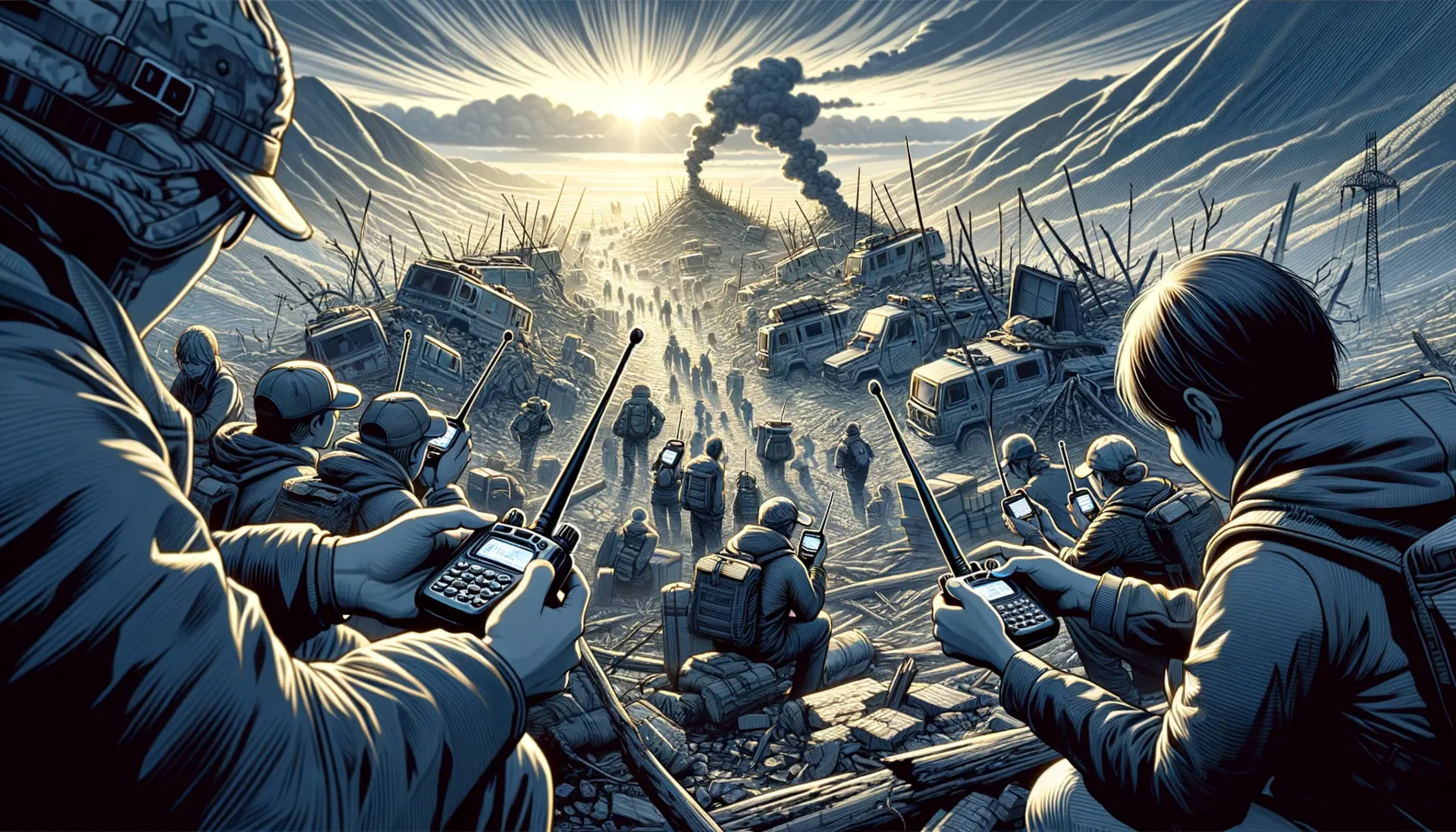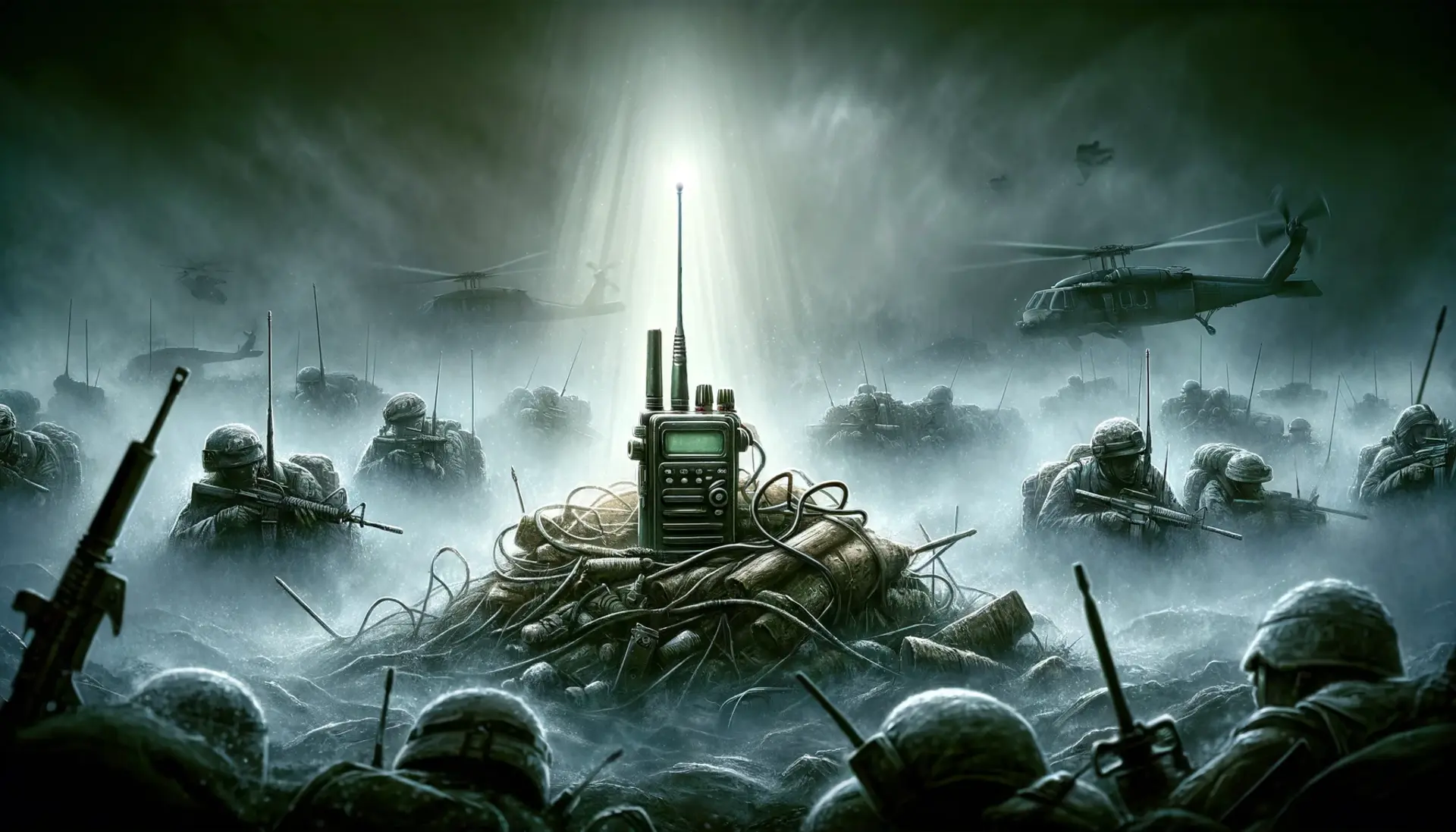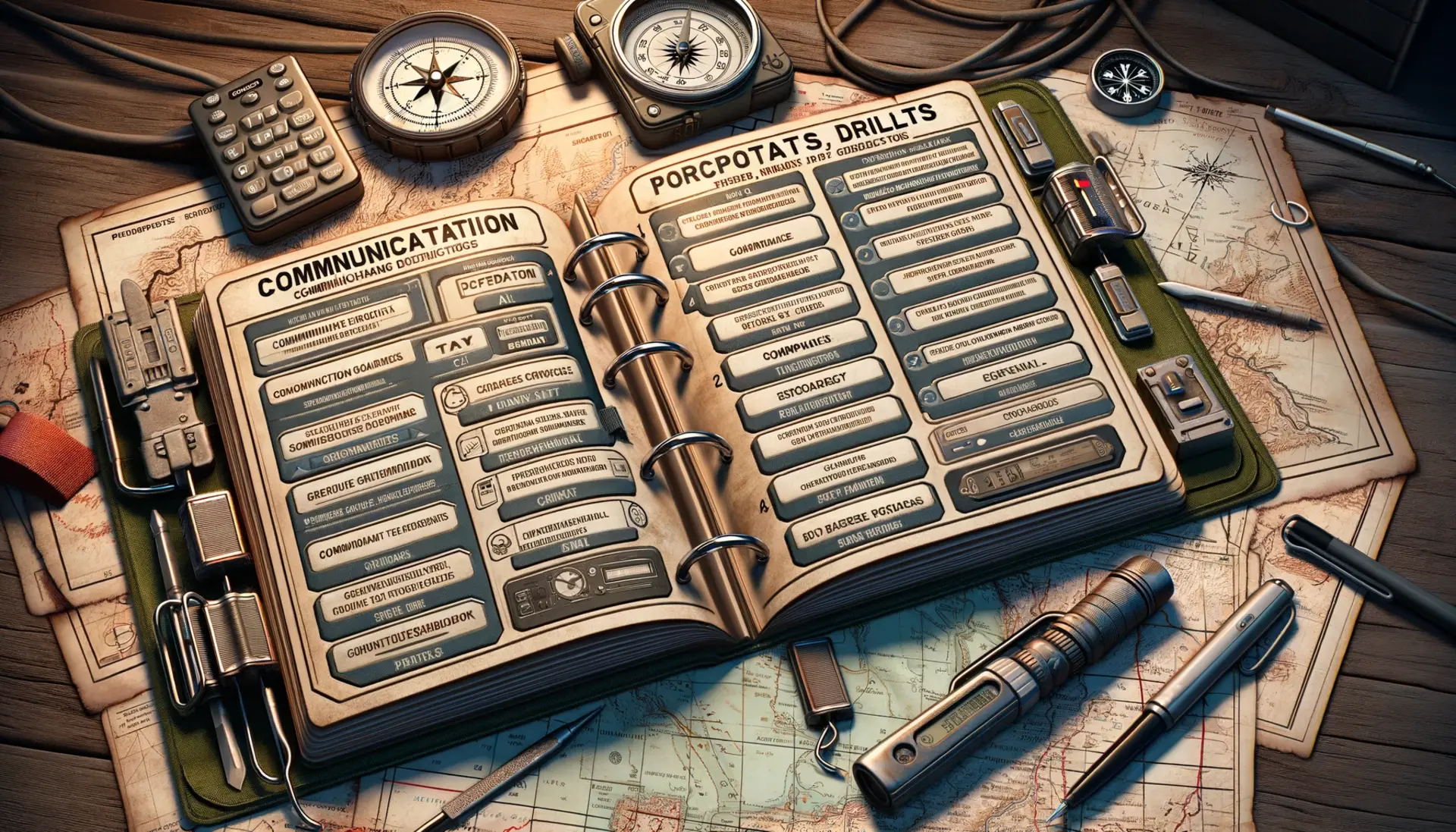The modern age has us teetering on the edge of a new kind of battlefield — one where information and emergency communication are as critical as any physical weaponry. For American patriots and survivalists who hold dear the tenets of freedom and preparedness, GhostNet represents a bulwark against the encroachment on these sacred values. This article peels back the layers of GhostNet, exploring this emergent concept that is redefining crisis communication networks for the prepared citizenry.
TL;DR Summary:
GhostNet is a decentralized communication strategy designed to ensure robust communication among citizens during crises when traditional networks may fail due to censorship, surveillance, or destruction. It emphasizes the importance of Tactical Operations Centers, flexible Command and Control nodes, and the use of HF radios for long-range communication. This article provides a comprehensive guide on how to build, train, and operate a GhostNet system to maintain crucial information flow in adverse conditions, underscoring the need for preparedness in the face of growing threats to communication freedoms and operational security.
Amidst the rising threat of censorship, surveillance, and attacks on the existing communications infrastructure, GhostNet offers a beacon of resistance. It stitches together the ideals of decentralization, self-reliance, and operational security, weaving a survivalist tapestry that stands robust against the uncertainty of our times.
The Premise of GhostNet and Tactical Operations Centers (TOC)
At its core, GhostNet is an emergency communications concept that empowers individuals and communities to establish reliable and resistant Tactical Operations Centers. These TOCs provide a strategic lifeline during crises, ensuring uninterrupted Command and Control nodes vital for operative coordination and community decision-making. This resilient framework is decentralized, scattering seeds of communication potentiality across the landscape to prevent a single point of failure.

The role of TOCs in crisis management cannot be overstated; they function as the nervous system for community-centric defense and logistics, essential for implementing ad-hoc communication systems. Command and Control nodes play the crucible within which trust and operational security are forged, underpinning the GhostNet survivability in complex environments.
Communication is a Lifeline
When disaster disrupts the facade of normalcy, communication emerges as the lifeline tethering individuals to hope and coordinated action. Non-military groups and survivalist communities face inherent challenges when erecting robust communication plans absent the rigid hierarchy of formal organizations. Such groups must embrace chaos and improvise, often turning to alternative communication protocols and emergency communication plans to weather the storm.

Drills simulating communication blackouts train the citizenry in the swift enactment of Radio frequency surveillance-resistant measures, ensuring that the echo chambers created by social and mainstream media do not constrain the flow of information. It is here that HF radio communication and VHF/UHF tactical radios play a crucial role, enabling long-range contact and networking essential for Command and Control nodes operation.
GhostNet Survivability and Resistance to Disruption
Network survivability in the face of adversity underpins the GhostNet philosophy. Traditional communication systems are prone to a myriad of threats — from the insidious corrosion of censorship to the overt dangers of infrastructure targeting and surveillance operations. Such hazards necessitate the proliferation of decentralized emergency communication networks capable of withstanding even the most deliberate of outages.

These challenges call for disruption-resistant networks where repeaters and hub stations give way to a mesh of users, functioning without reliance on centralized conduits. Such a setup frustrates attempts to dismantle or snoop on the network, allowing communications to persist even amidst the kinetic targeting of communication nodes. Competing interests and the ricochet of ideologies within these networks underscore the need to foster a spirit of tolerance and unity against censorship resistance.
The Importance of Timing and Responsiveness
Every moment counts in crisis response; timing and responsiveness can mean the difference between salvation and succum to disaster. Public service communication response structures often differ vastly from the civil sphere, which demands the flexibility and swift adaptation to evolving situations. Timing mishandled could derail not just emergency communication efforts, but the survival initiatives they support.

GhostNet's approach caters to these very demands, embodying the essence of readiness and the call to action. The timing of response is meshed with the communications continuum, ensuring that community coordination is not just timely but also strategic.
Overcoming the Fog of War in Emergency Communication
In the chaos of crisis, the fog of war enshrouds the landscape, obscuring the familiar and distorting the reliable. GhostNet strategies recognize that no plan is impervious to the unpredictable nature of conflict and thus emphasizes the significance of reliable communications during combat. This clause prioritizes the preparedness to pivot and adapt when conditions evolve beyond original prognostications — embodying the truism that "No plan survives first contact."

One must not simply prepare for panic situations but plan for them meticulously. Preparedness to circumvent the inevitable complications brought by the fog of war ensures community resilience and reduces the toll of chaos and loss of life when disaster strikes.
Technical Aspects and Equipment Choice
The technical terrain of GhostNet is rich and varied, anchored by the critical choices in communication equipment and protocols. QRP HF transceivers become the soldiers in the trenches, their portability providing the agility needed for mobile and evasion-ready communication nodes. Digital modes like JS8Call and Winlink shine as the vanguards of efficient and low-profile information exchange, operating discreetly to ensure survivability against anti-censorship communication tools.

Realistic expectations must guide prep for the equipment used in crisis moments. While it's unthinkable to match the fully stocked command centers, even a minimalist setup employing the right combination of QRP radiating equipment can make a significant difference. In this dance between the high-tech and the approachable, the preparedness of the average person can become an invaluable asset in the ghostly network of GhostNet.
Conclusion
GhostNet is less of a system and more of a clarion call to the American patriots and survivalist community. It embodies the push towards decentralization, the zeal to protect and uphold the foundational values that tether us to our sense of national and communal identity. This communicative independence enshrined in the principles of GhostNet reminds us that truth, information, and mutual aid are not just pillars of society but the ramparts against the tides of adversity.

As the threats to communication freedoms and operational security loom larger, GhostNet stands as both shield and beacon. It invites every concerned citizen to contribute, to build, and to foster resilience — ensuring that when information is the key to survival, it is never fettered, never thwarted, and never lost.
Appendices

Equipment for GhostNet:
Software Defined Radio (SDR) Receiver
There are many options, but one of the most popular kits comes with everything but a computer to use it. This is a receive only radio.
SDR Transmitter
HackRF One from Great Scott Gadgets is a Software Defined Radio peripheral capable of reception of radio signals from 1MHz to 6GHz. Designed to enable test and development of modern and next-generation radio technologies, HackRF One is an open source hardware platform that can be used as a USB peripheral or programmed for stand-alone operation.
USB GPS Receiver



